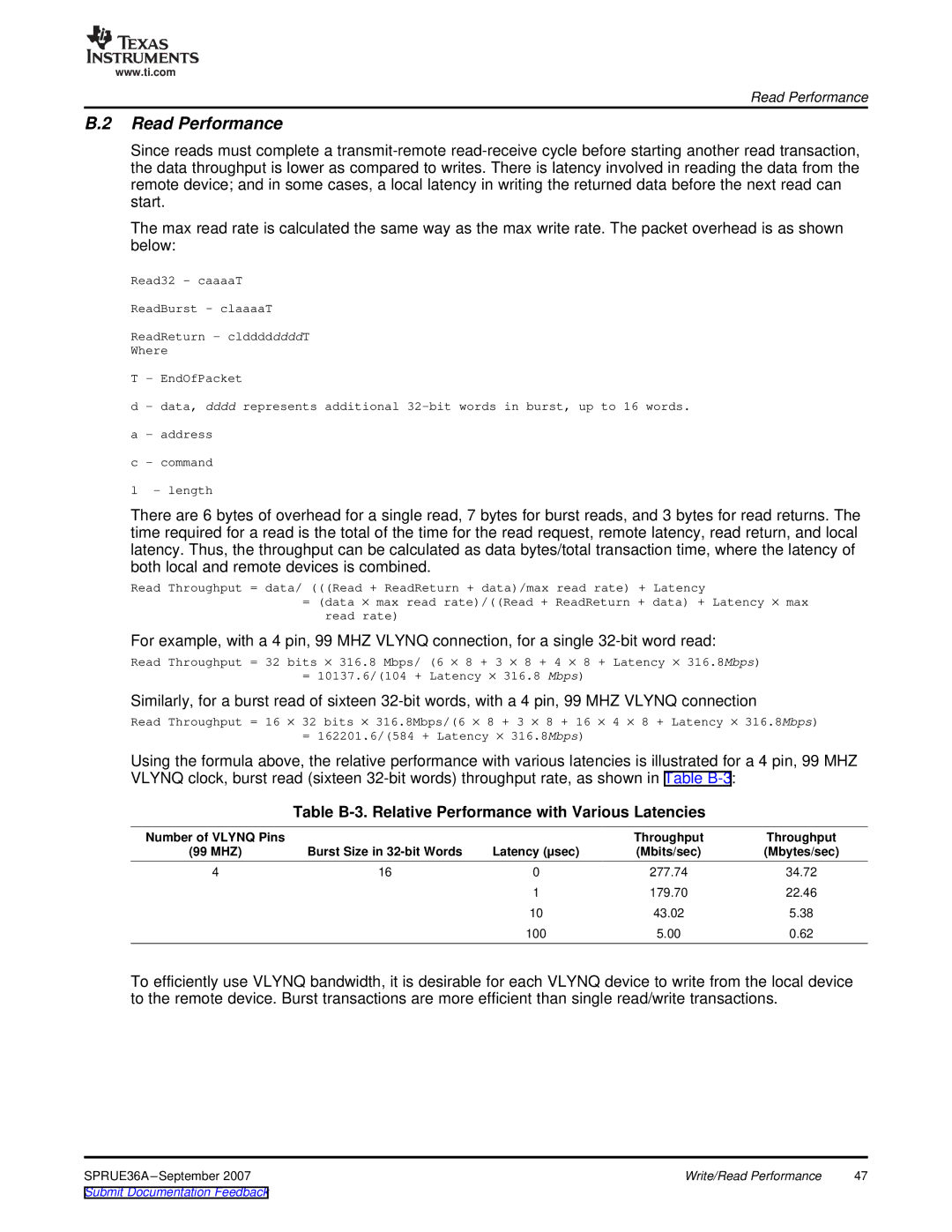
www.ti.com
Read Performance
B.2 Read Performance
Since reads must complete a
The max read rate is calculated the same way as the max write rate. The packet overhead is as shown below:
Read32 - caaaaT
ReadBurst - claaaaT
ReadReturn - clddddddddT
Where
T - EndOfPacket
d - data, dddd represents additional
a - address
c - command
l - length
There are 6 bytes of overhead for a single read, 7 bytes for burst reads, and 3 bytes for read returns. The time required for a read is the total of the time for the read request, remote latency, read return, and local latency. Thus, the throughput can be calculated as data bytes/total transaction time, where the latency of both local and remote devices is combined.
Read Throughput = data/ (((Read + ReadReturn + data)/max read rate) + Latency
=(data × max read rate)/((Read + ReadReturn + data) + Latency × max read rate)
For example, with a 4 pin, 99 MHZ VLYNQ connection, for a single
Read Throughput = 32 bits × 316.8 Mbps/ (6 × 8 + 3 × 8 + 4 × 8 + Latency × 316.8Mbps)
= 10137.6/(104 + Latency × 316.8 Mbps)
Similarly, for a burst read of sixteen
Read Throughput = 16 × 32 bits × 316.8Mbps/(6 × 8 + 3 × 8 + 16 × 4 × 8 + Latency × 316.8Mbps) = 162201.6/(584 + Latency × 316.8Mbps)
Using the formula above, the relative performance with various latencies is illustrated for a 4 pin, 99 MHZ VLYNQ clock, burst read (sixteen
Table B-3. Relative Performance with Various Latencies
Number of VLYNQ Pins |
| Latency (μsec) | Throughput | Throughput |
(99 MHZ) | Burst Size in | (Mbits/sec) | (Mbytes/sec) | |
4 | 16 | 0 | 277.74 | 34.72 |
|
| 1 | 179.70 | 22.46 |
|
| 10 | 43.02 | 5.38 |
|
| 100 | 5.00 | 0.62 |
To efficiently use VLYNQ bandwidth, it is desirable for each VLYNQ device to write from the local device to the remote device. Burst transactions are more efficient than single read/write transactions.
SPRUE36A | Write/Read Performance | 47 |
